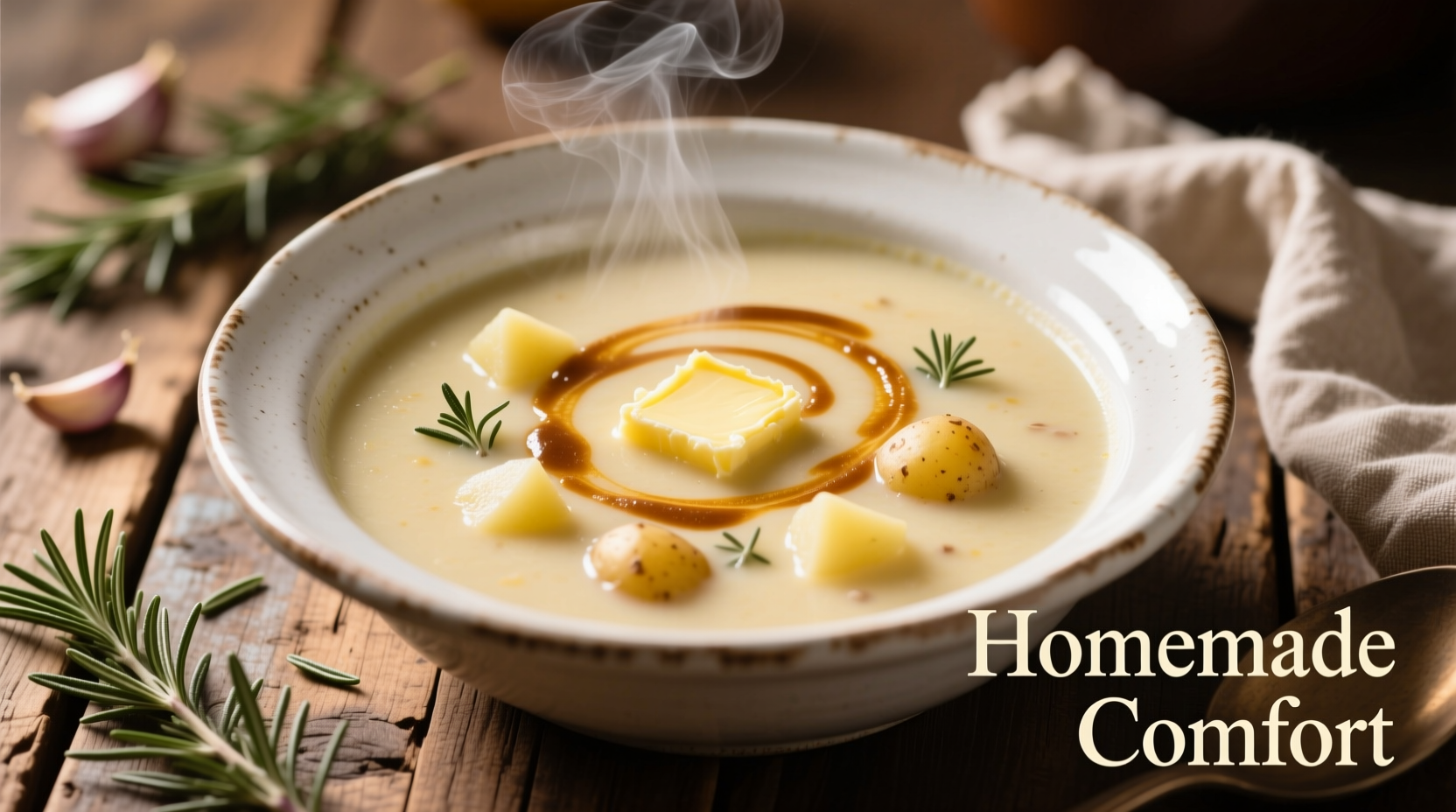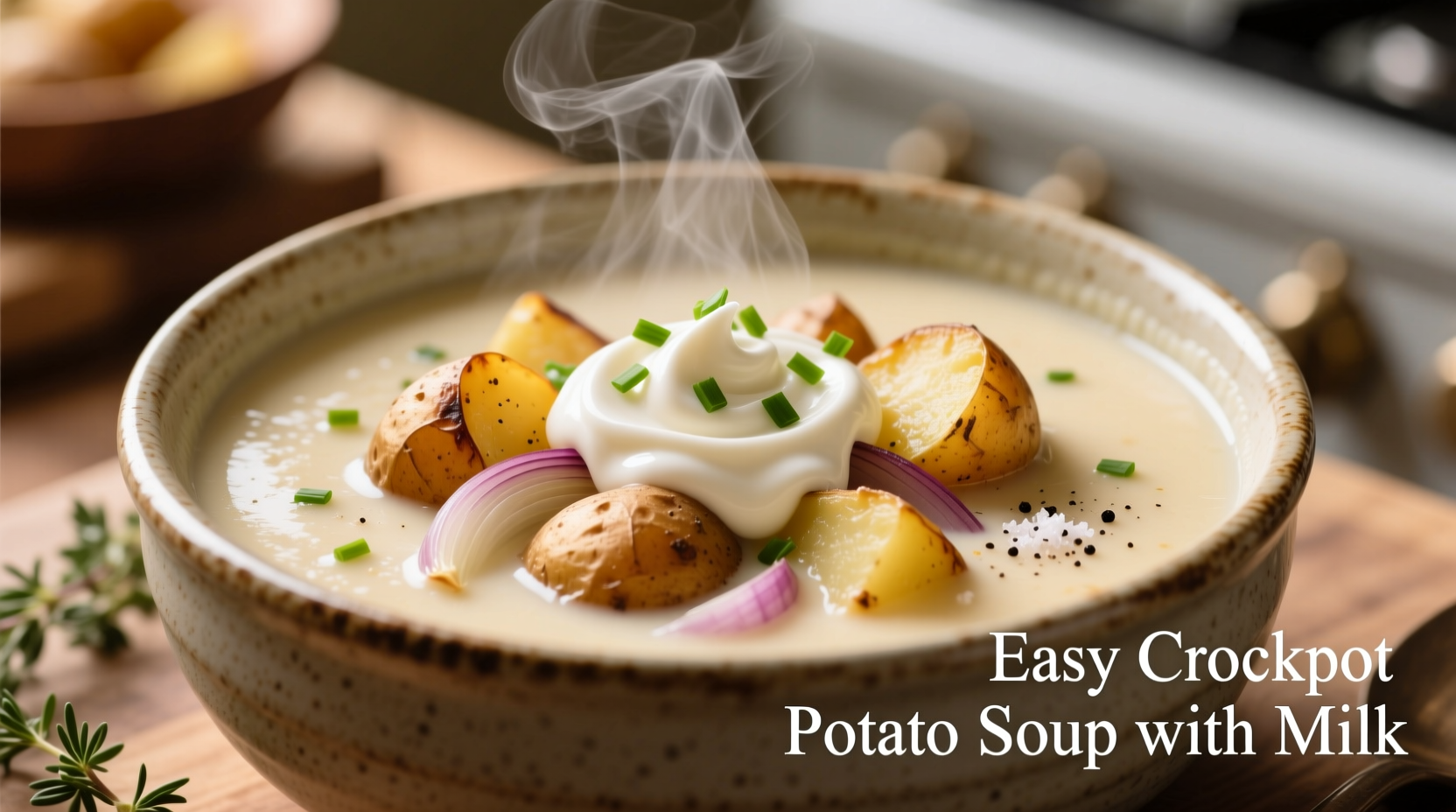When you're craving hearty comfort food but short on time, this easy crockpot potato soup with milk transforms basic ingredients into a restaurant-quality meal with virtually no hands-on effort. Unlike traditional recipes requiring constant stirring, the slow cooker method develops deep flavors while you focus on other tasks—making it ideal for busy families, meal preppers, and anyone seeking a fuss-free path to creamy potato perfection.
Why This Crockpot Potato Soup Recipe Works
The magic of this easy crockpot potato soup with milk lies in its thoughtful ingredient balance and cooking technique. Milk provides a lighter alternative to heavy cream while still delivering that signature creaminess potato soup lovers expect. According to the USDA Food Safety guidelines, maintaining your slow cooker at 140°F or higher throughout cooking ensures food safety while allowing flavors to meld perfectly.
Unlike stovetop versions that risk scorching or uneven cooking, the crockpot's gentle heat creates consistent texture without constant monitoring. This method particularly benefits those seeking simple slow cooker potato soup recipes that don't require culinary expertise—just dump ingredients and walk away.
Essential Ingredients and Smart Substitutions
Quality ingredients make the difference between bland and brilliant potato soup. Here's what you'll need for this dairy-based potato soup recipe, plus practical alternatives for dietary needs:
| Core Ingredient | Why It Matters | Smart Substitutions |
|---|---|---|
| Russet potatoes (2 lbs) | High starch content creates natural creaminess | Yukon Gold for buttery flavor |
| Whole milk (2 cups) | Richer flavor and better texture than skim | Half-and-half for extra richness |
| Chicken broth (4 cups) | Depth of flavor foundation | Vegetable broth for vegetarian version |
| Yellow onion (1 medium) | Sweetness balances potato starch | Shallots for milder flavor |
The Potato Board confirms Russets' superior thickening properties make them ideal for soups, while whole milk's fat content prevents curdling better than lower-fat alternatives. For those wondering how to prevent curdling in potato soup, the National Dairy Council recommends warming milk gradually by tempering it with hot broth before adding to the crockpot.
Step-by-Step Cooking Process
Follow these four straightforward phases for foolproof results every time. This quick preparation potato soup crockpot method requires just 15 minutes of active time:
Preparation Phase (10 Minutes)
- Peel and dice 2 lbs Russet potatoes into 1/2-inch cubes
- Finely chop 1 medium yellow onion and 2 celery stalks
- Mince 2 garlic cloves (optional for extra flavor)
- Place all vegetables in crockpot with 4 cups broth, 1 tsp salt, and 1/2 tsp black pepper
Cooking Phase (6-8 Hours)
- Cook on LOW for 6-8 hours or HIGH for 3-4 hours until potatoes are fork-tender
- Critical step: Before adding milk, remove 2 cups of soup and blend until smooth
- Gradually whisk blended mixture back into crockpot
- Slowly add 2 cups warmed milk while stirring constantly
- Cook 15 more minutes on LOW to allow flavors to marry

Troubleshooting Common Issues
Even the best easy crockpot potato soup with milk recipes encounter occasional hiccups. Here's how to fix them:
- Soup too thin: Mix 2 tbsp cornstarch with 2 tbsp cold water, then stir into soup and cook 15 minutes
- Soup too thick: Gradually add additional broth 1/4 cup at a time until desired consistency
- Milk curdling: Always temper milk with hot soup before adding; avoid boiling after dairy addition
- Flavor too bland: Add 1/4 tsp smoked paprika or a Parmesan rind during final cooking phase
According to FDA food storage guidelines, properly stored potato soup remains safe for consumption for 3-4 days in the refrigerator. For longer storage, the FDA recommends freezing in airtight containers for up to 3 months.
Serving and Storage Recommendations
Maximize your family-friendly crockpot potato soup experience with these professional tips:
- Serving temperature: Maintain between 140-160°F for optimal flavor release
- Perfect pairings: Crusty bread, simple green salad, or grilled cheese sandwiches
- Garnish ideas: Crispy bacon, chives, shredded cheese, or a dollop of sour cream
- Storage method: Cool completely before transferring to airtight containers
- Reheating: Warm gently on stove over medium-low heat, stirring frequently
Nutritional Profile and Dietary Adaptations
This milk instead of cream in potato soup recipe offers a lighter alternative to traditional versions while maintaining satisfying richness. A standard serving (1.5 cups) contains approximately:
- Calories: 220
- Protein: 7g
- Carbohydrates: 32g
- Fat: 7g (4g saturated)
- Fiber: 3g
For special dietary needs:
- Gluten-free: Naturally gluten-free (verify broth ingredients)
- Lactose-intolerant: Substitute lactose-free milk and ensure broth is dairy-free
- Vegan: Use plant-based milk and vegetable broth (note: texture will differ)
- Lower calorie: Reduce to 1 cup milk and increase broth to 5 cups
Frequently Asked Questions
Here are answers to the most common questions about making easy crockpot potato soup with milk:











 浙公网安备
33010002000092号
浙公网安备
33010002000092号 浙B2-20120091-4
浙B2-20120091-4